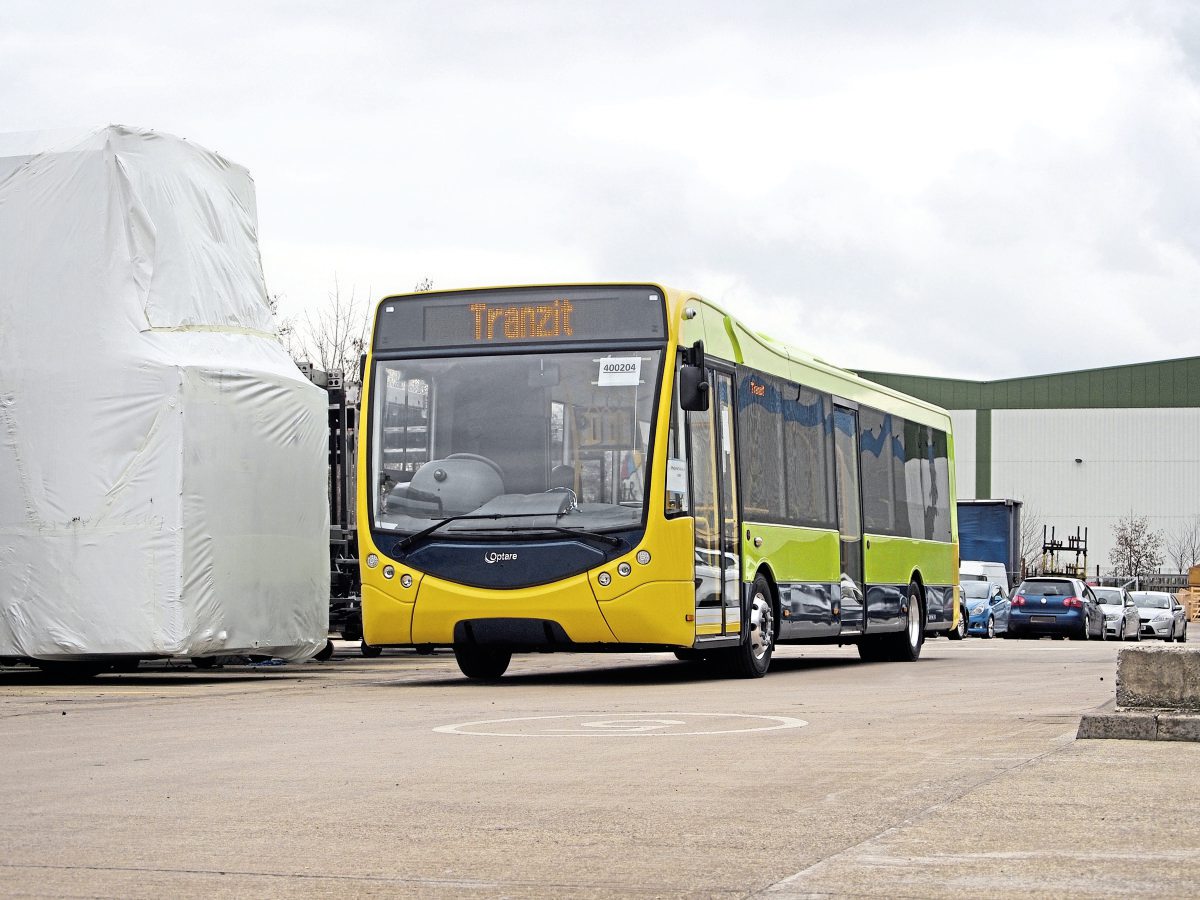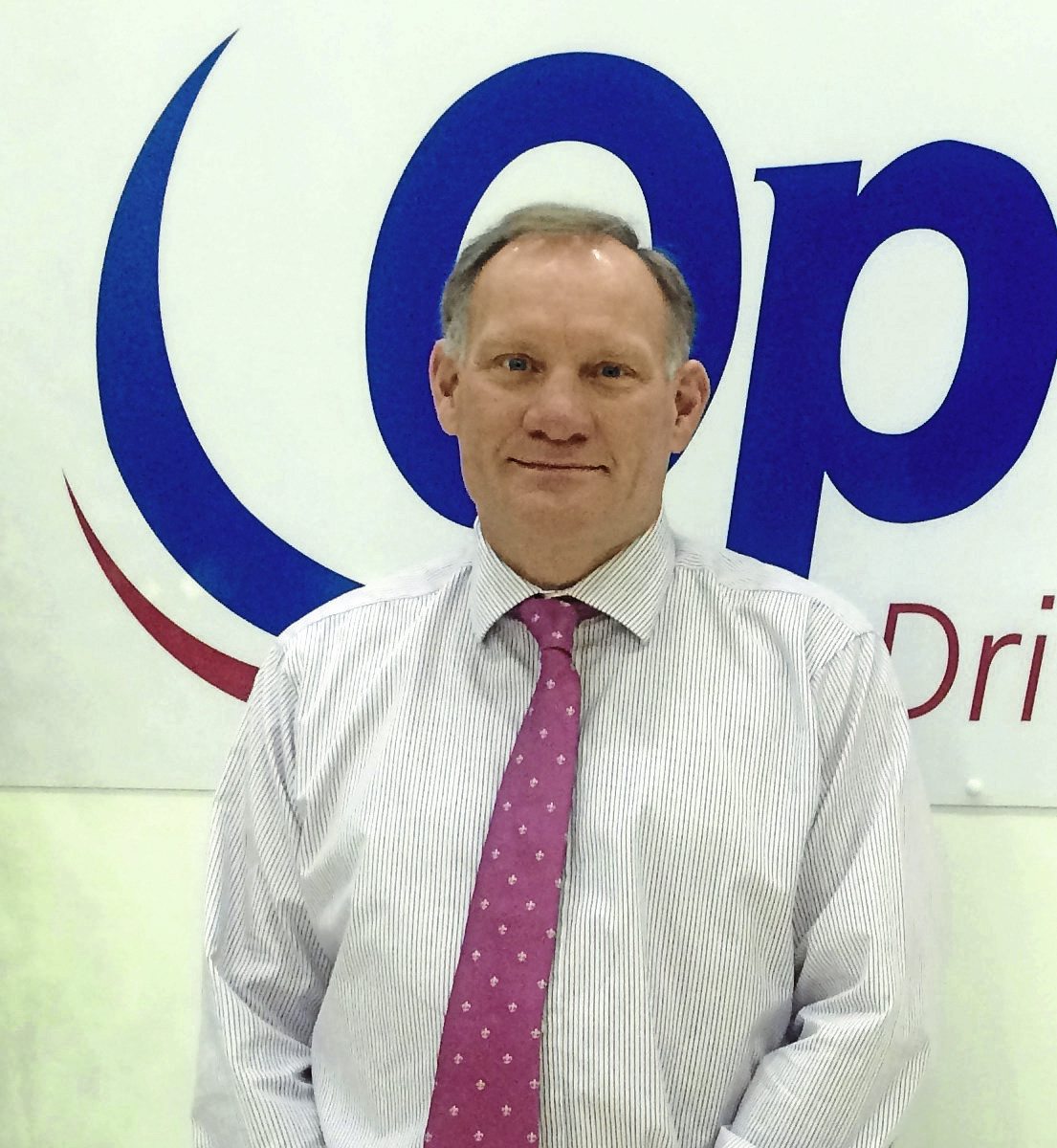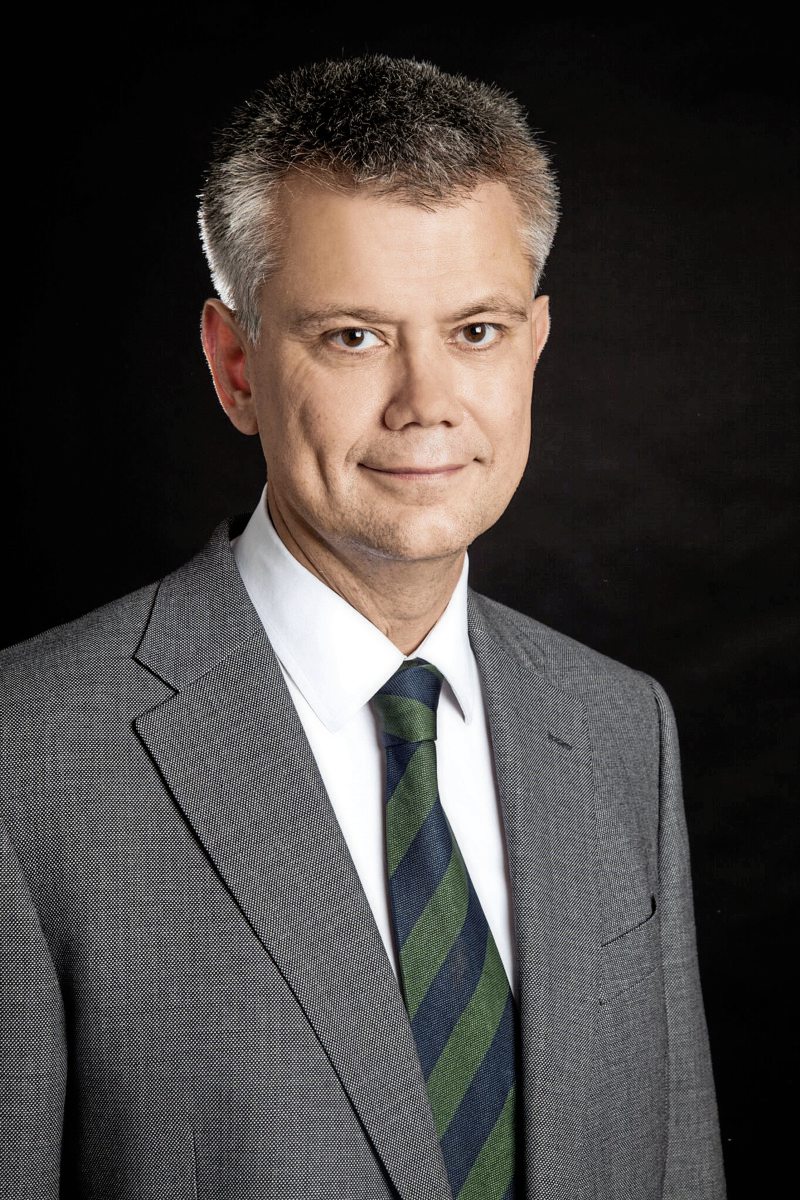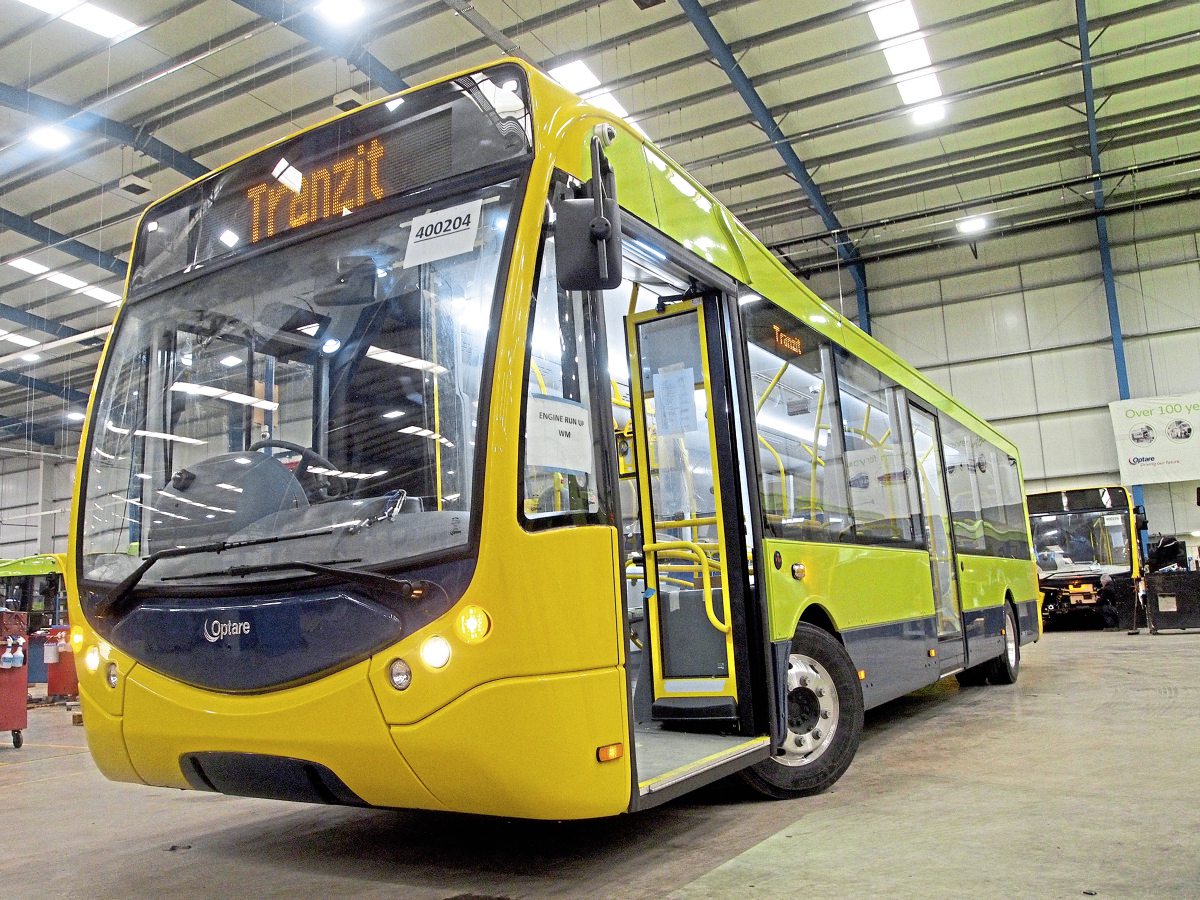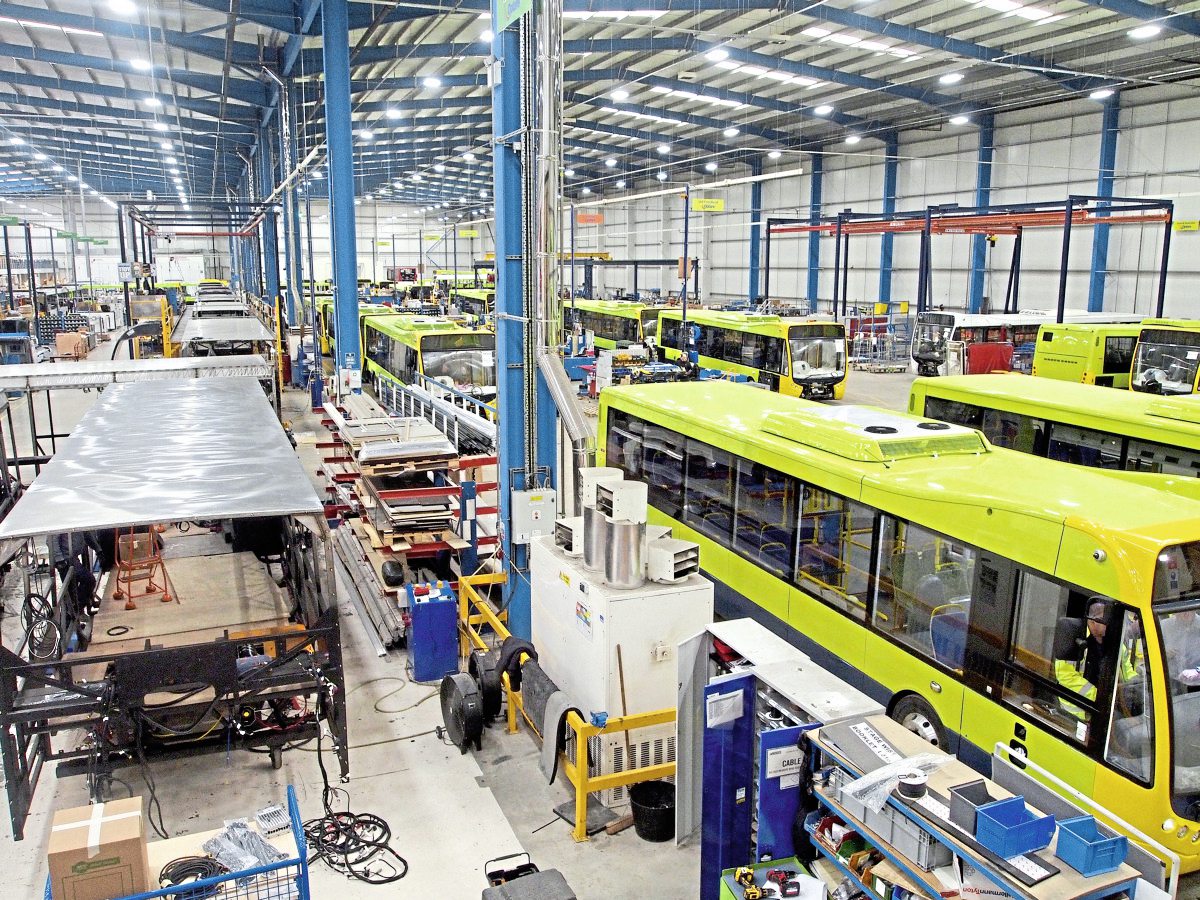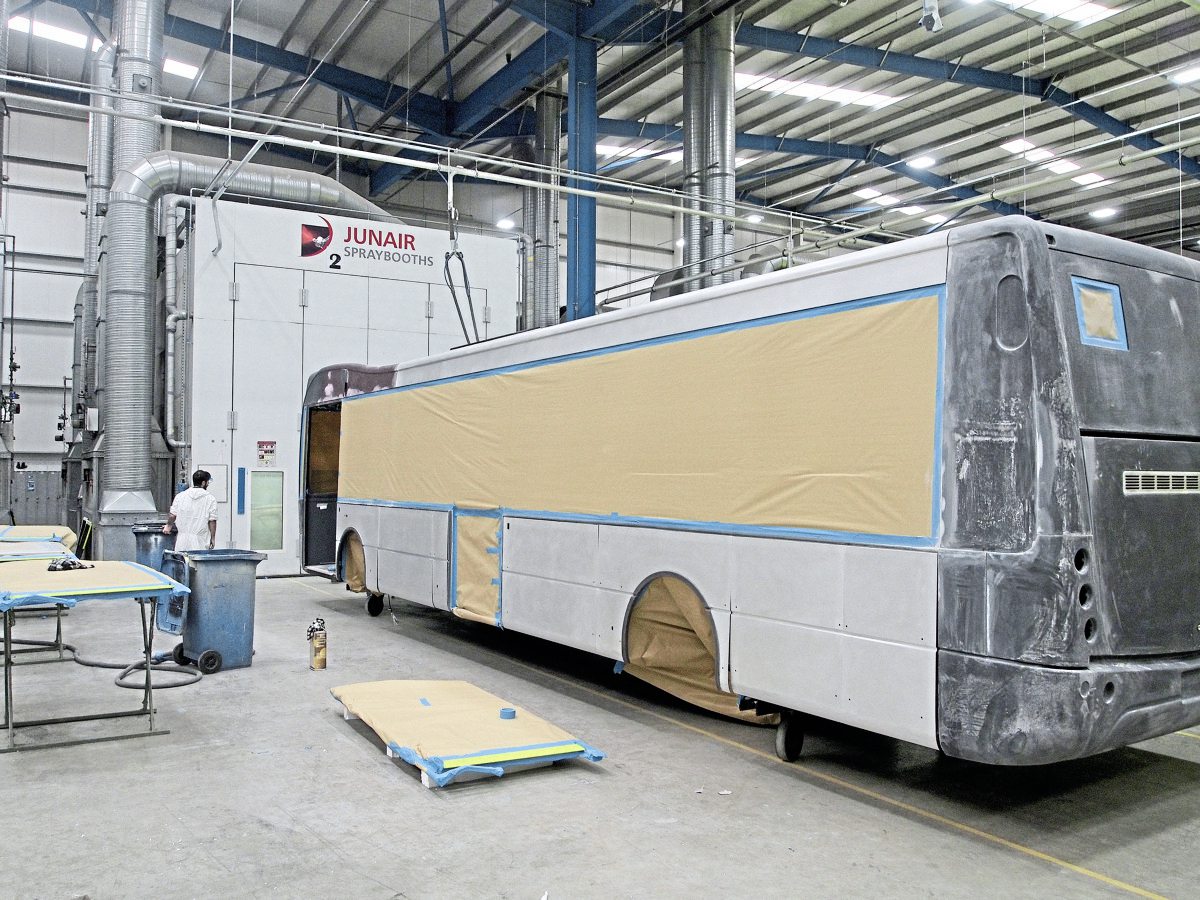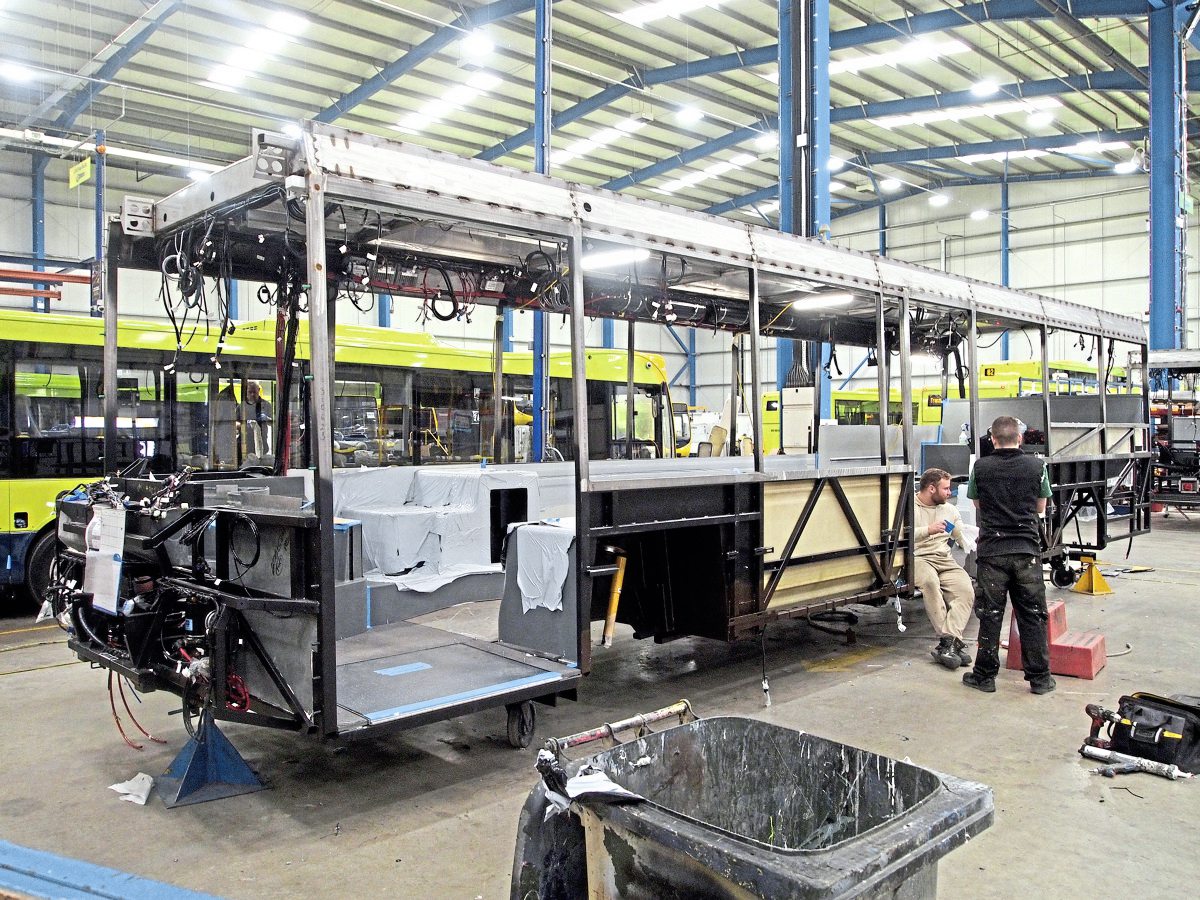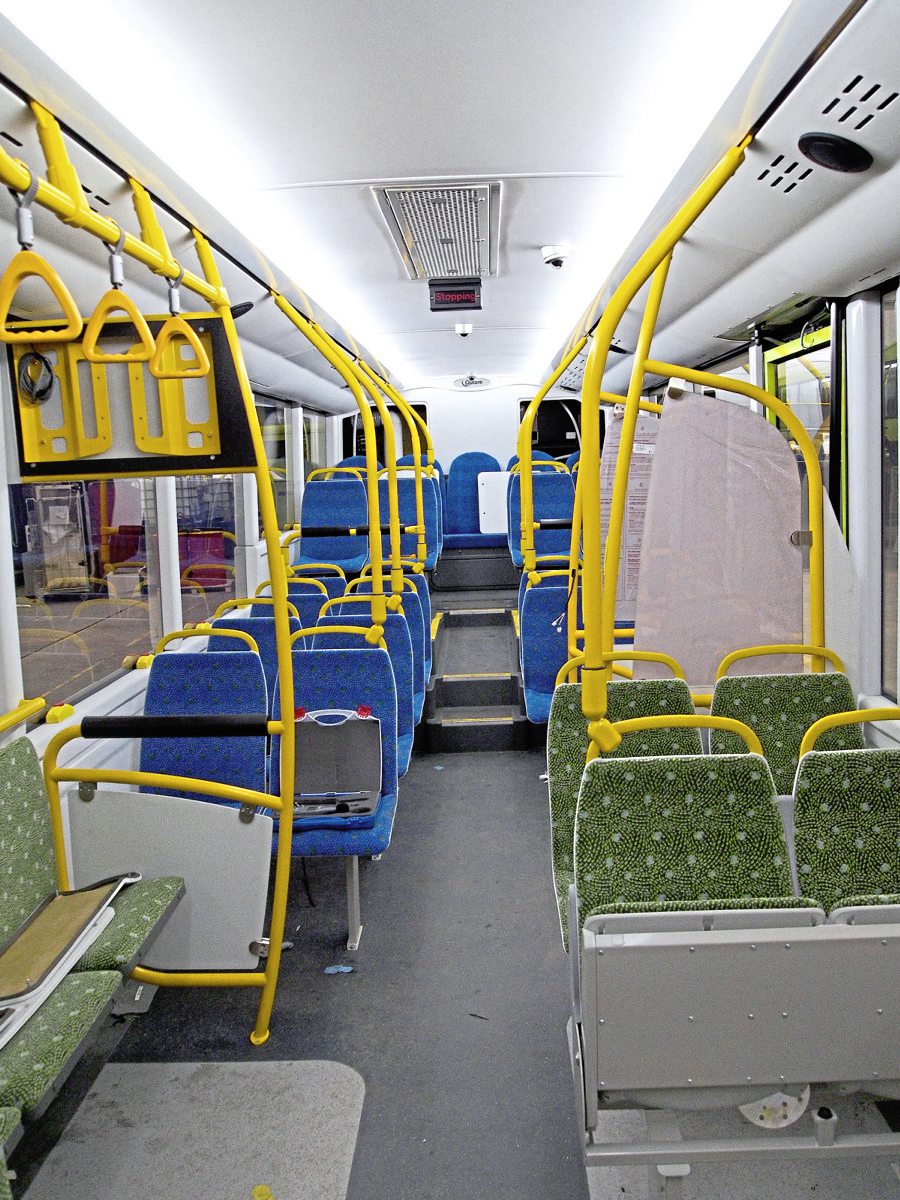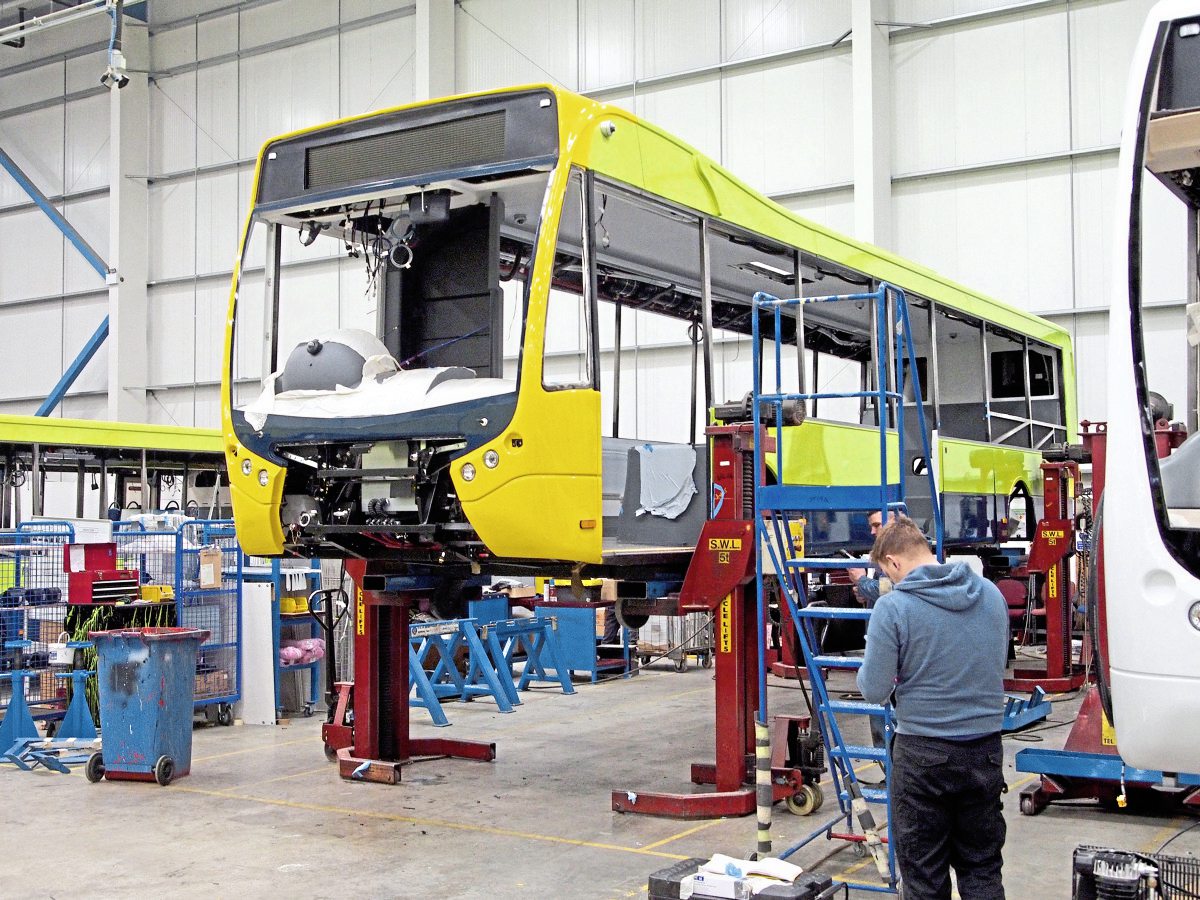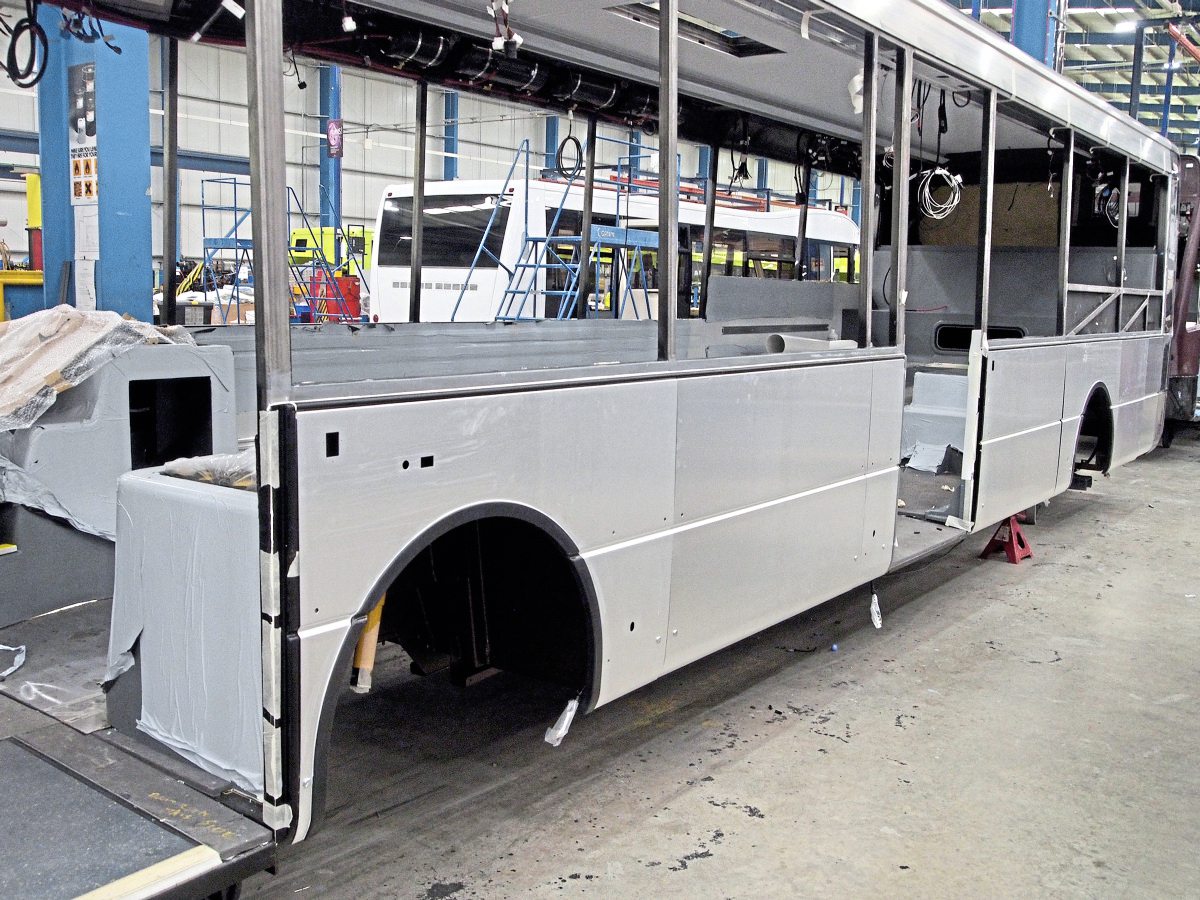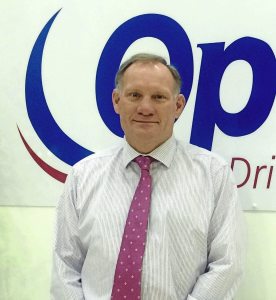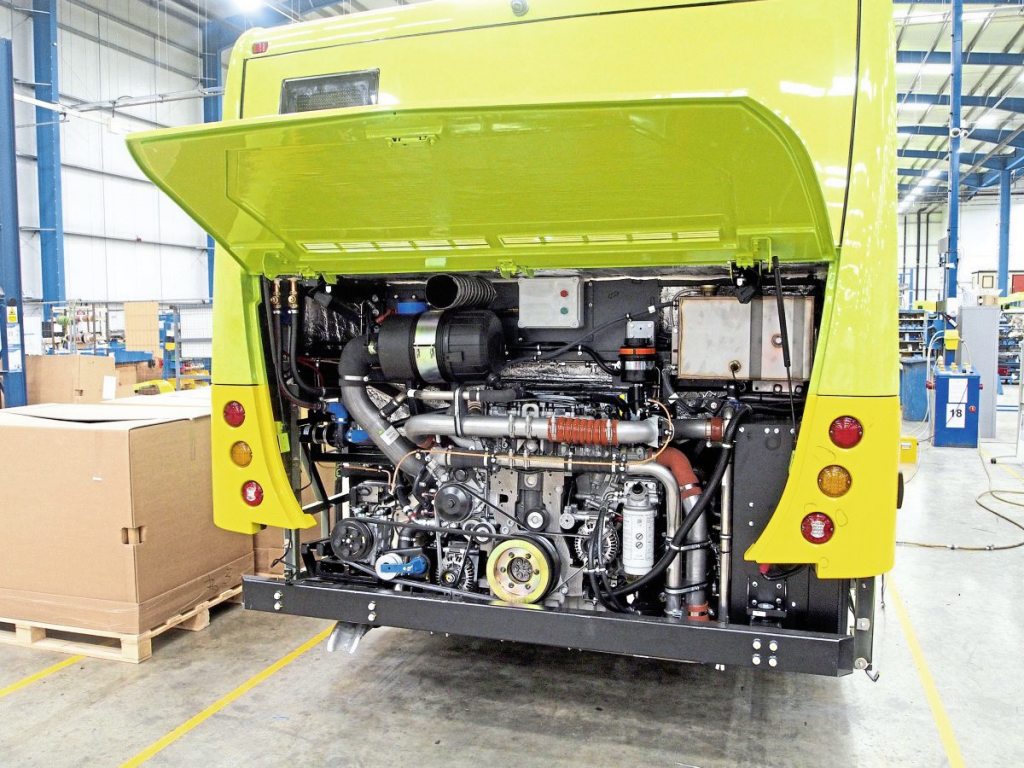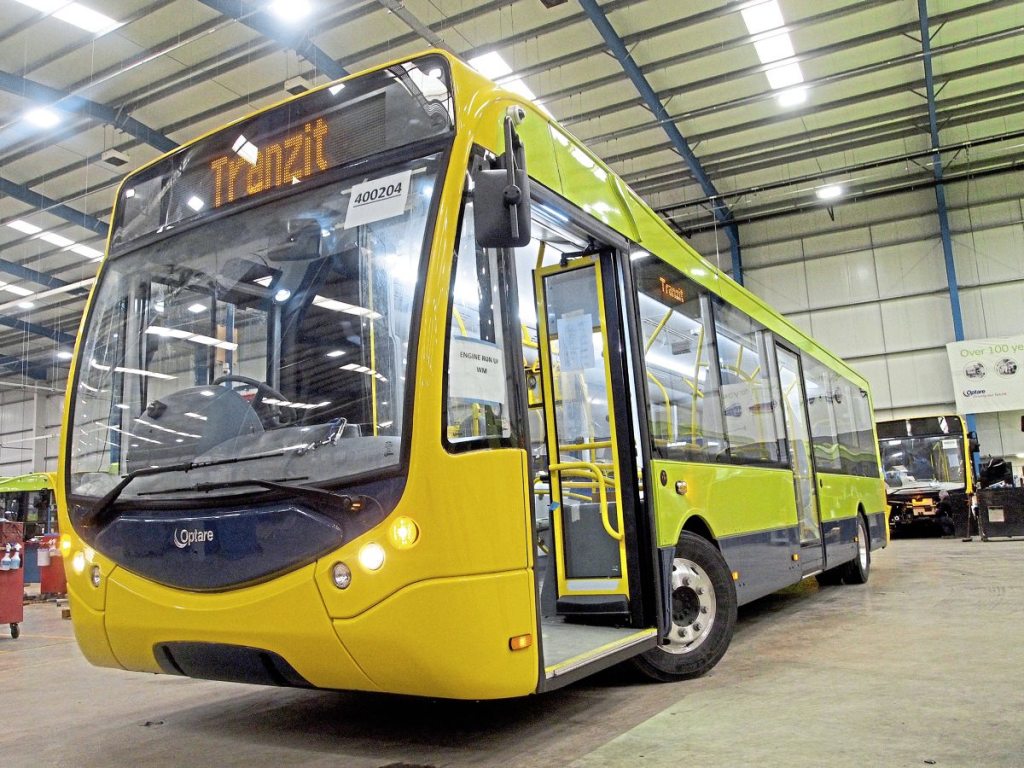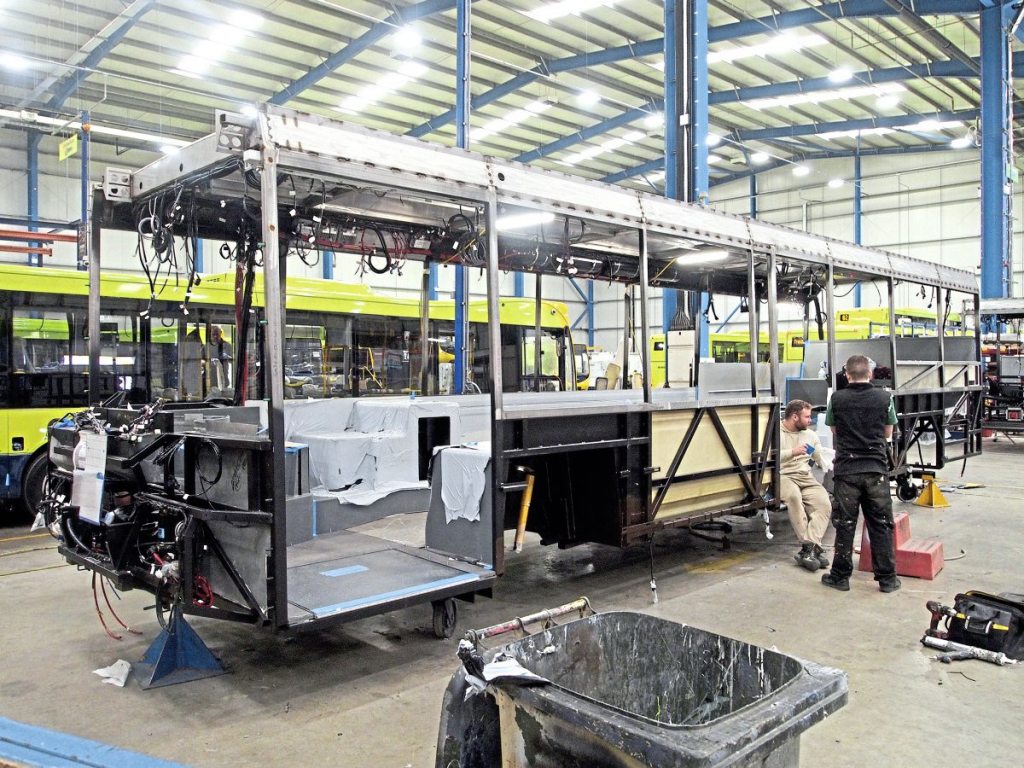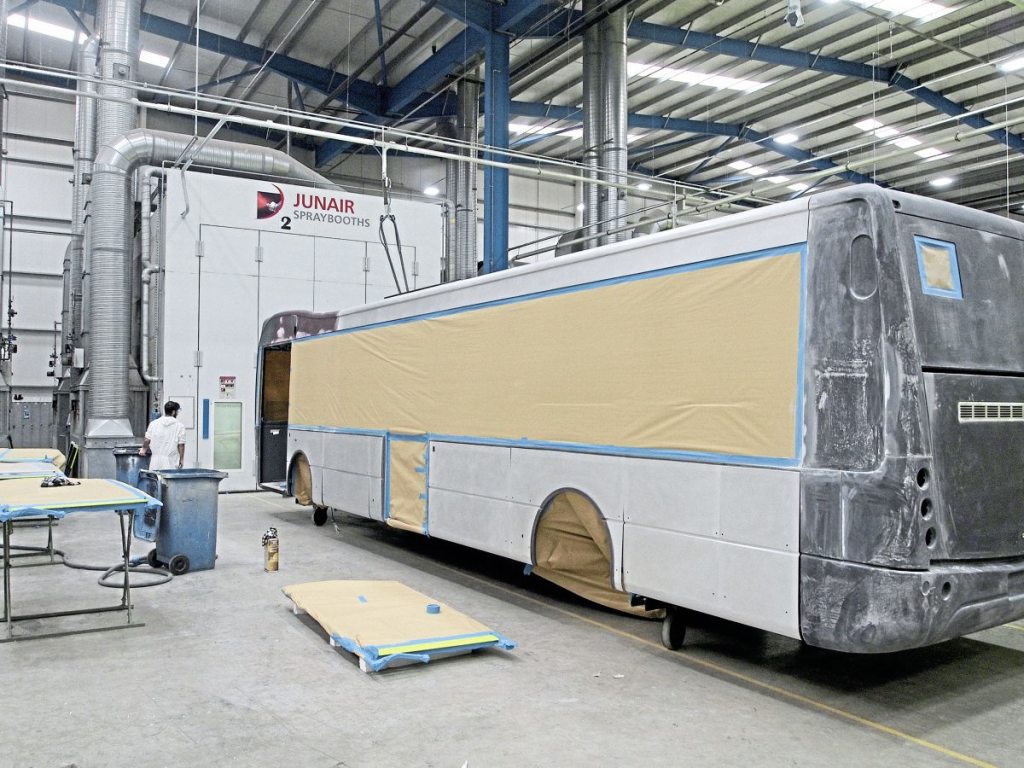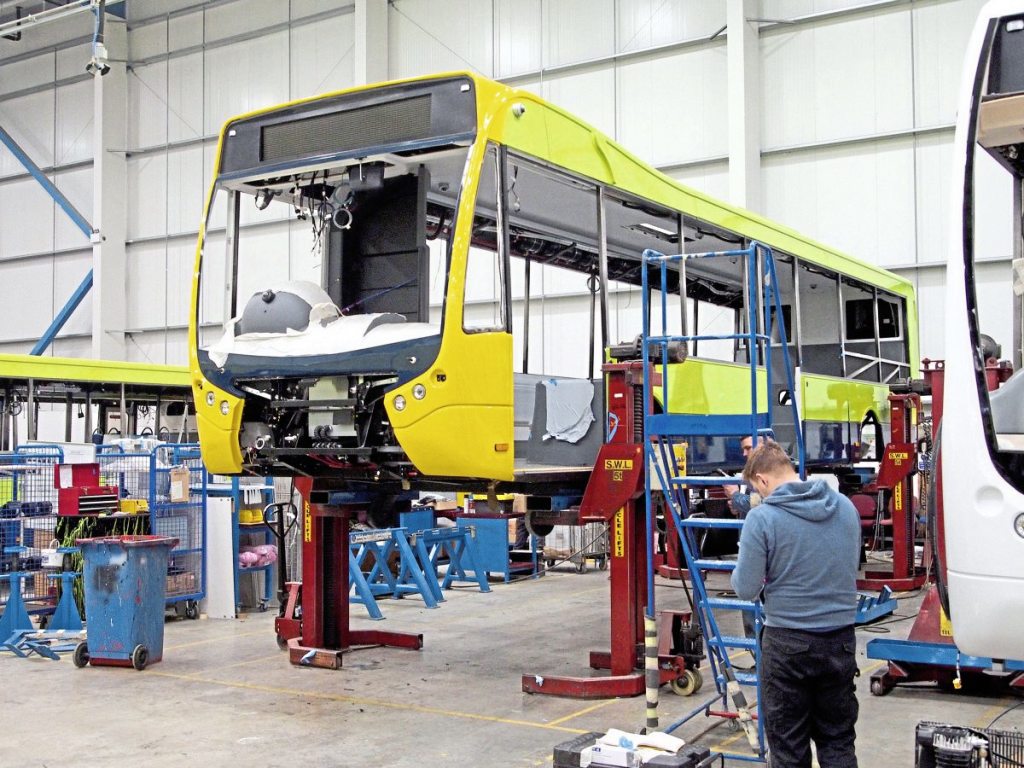Optare casts its eyes overseas
The Yorkshire-based manufacturer is pushing for even more export orders following its massive New Zealand deal.
Chris Peat goes to meet Optare Group’s President, Graham Belgum and Commercial Director, Robert Drewery
A factory packed with green buses in various states of construction is considered a good sign at Optare.
The Sherburn-in-Elmet plant is currently manufacturing £21m-worth of Solos for its 114-bus order from Tranzit Group, one of New Zealand’s largest public transport operators, which is part of the company’s focus on better expanding itself in the overseas bus market. But our conversation spreads more broadly, to cover the manufacturer’s future endeavours and views of how the industry could develop.
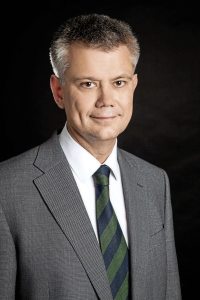
Robert Drewery – “In the next two to three years, electric buses will be doing 200 miles with full electric heating switched on”
Graham candidly set the scene in the run-up to receiving the New Zealand order: “For us, it has been very hard indeed in the last few years. Government subsidies for buses have decreased and buses for subsidised routes are our bread and butter. There is the whole issue with congestion and falling income that impacts the industry. The UK market has been in decline in the last two years and we expect it to continue.” He mentioned other British manufacturers are also finding times hard.
Building bespoke buses
To overcome these challenging market conditions, Optare is further promoting its bespoke bus design package. To illustrate how it is doing this, Graham gave the example of Transdev Blazefield, which has taken vehicles tailored to its needs from the manufacturer on three occasions.
“We can build a product that is stylish and can meet their requirements. It’s won us business in Northern Ireland and with Translink. Bespoke is our USP, it allows us to keep going forward,” Graham said.
As well as providing a bespoke offering, in the face of the challenging home market, Optare is looking to do more business overseas. Last year, the company appointed a new dealer in Australia: Bus Corporation Oceania (BCO). BCO is backed by Toyota and has “brought a whole new level of professionalism” to its offerings Down Under, said Robert.
Optare has sold around 100 vehicles over the last few years in an Australian market with an industry volume of around 1,000 vehicles annually, with the Tempo and Solo proving popular in that part of the world. B&CB reported on a video of Solos in action in New South Wales (See B&CB 1471, 16 March 2018), which was uploaded to YouTube:
https://youtu.be/98NuN3OUKEI
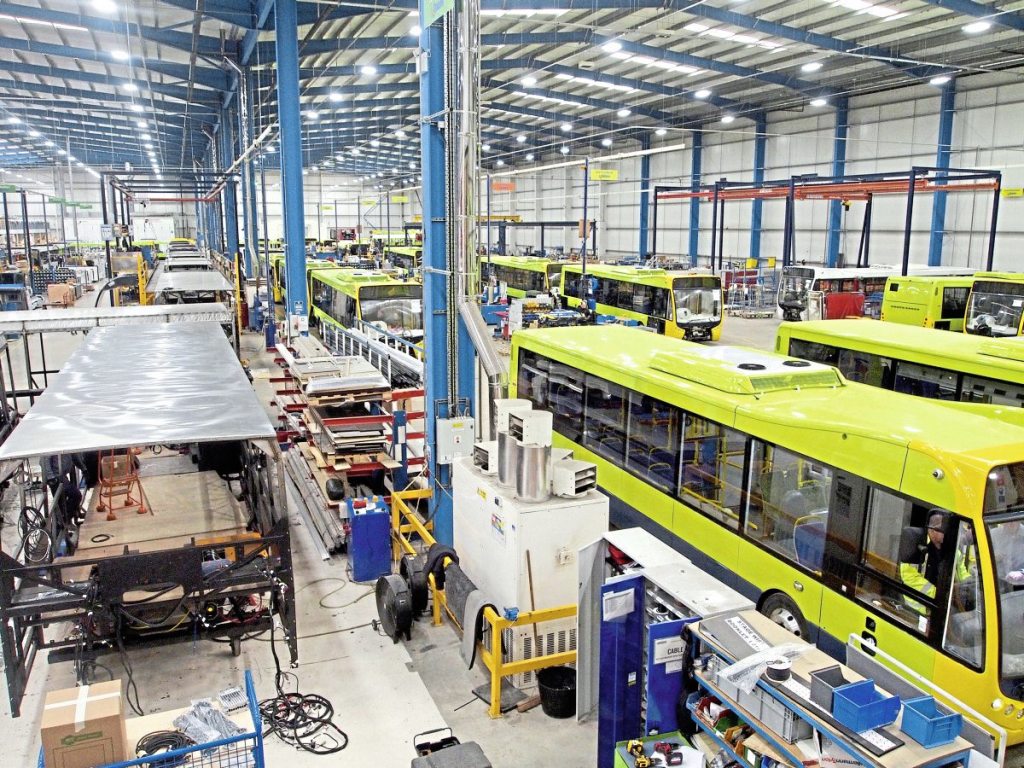
Dominating the manufacturer’s factory floor at the moment are the green Tranzit Metrocitys for New Zealand
When it came to bidding for the tender for the 114-bus order in New Zealand, Graham said the vehicle’s light weight and the fuel savings it should achieve was a factor in the win. The Metrocitys are now being delivered, with the final one set to be delivered by July this year.
The bespoke nature of the vehicles was another factor in being awarded the order, claimed Graham. He said: “Being a monocoque structure, not a body and chassis, this has given us a better space envelope to design with. It allows us to hang things on the structure.
“It also allows us to be bespoke in terms of power, allowing us to design a space where a diesel engine or electric power can be added. The structure allows for ease of assembly. It also means we can design it with ease of maintenance in mind. And this is all because we don’t have to build on someone else’s chassis.”
To illustrate the bespoke nature of Optare’s offering, Robert gave the example of Transdev’s Mainline service, which last year received 30 Versas. The manufacturer was able to make some minor redesigns to these buses over the offside front wheel as per the operator’s specifications. It also installed some wireless charging pads on small tables and made some adjustments to the front light panels and the bonnet to make it fit into the stylisation of the operator’s branding.
Eastern promise
So, are there any other overseas markets in which Optare will be a player? “Another opportunity we have had is the trial of a bus in Hong Kong,” said Graham.
The vehicles are out with two of Hong Kong’s biggest operators, which Graham mentioned have government backing. The Solos are being trialled for a three-month period, in the run up to tenders being issued for new vehicles. Graham said: “They wanted something in between a full-size bus and a minibus. The Solo fills the gap and fills the need. We’re very excited! I’m going out there in April; I’m hopeful there is something that will come from it.”
Robert noted the Solo is an unusual vehicle compared to what else is running in Hong Kong and as such has generated some interest from the public. He said: “The Solo in Hong Kong has generated loads of videos on the internet. In fact, I’ve heard there is a waiting list for people to board them, they are proving that popular. It’s become a bit of a star over there.”
Graham said: “As long as everything goes to plan, we hope to have some orders from them. The next step is Singapore. We think there is a market in Singapore for the Solo.”
Optare is looking to sell its Solo into the Middle East too. Commenting on this, Graham said: “We are aiming to provide that size and shape vehicle to be able to feed big bus routes; tackling narrow streets and improving accessibility. These too will have a bespoke design to meet cultural requirements and to cope with the heat over there.
“So, there are some great opportunities for the Solo in the next two to three years. Our whole approach is now export led. But we do hope the UK market will come back to how it was.”
Graham said: “We’re not trying to be all things to all people though. The Solo in Singapore, Hong Kong and the Middle East is considered the right product for the market.”
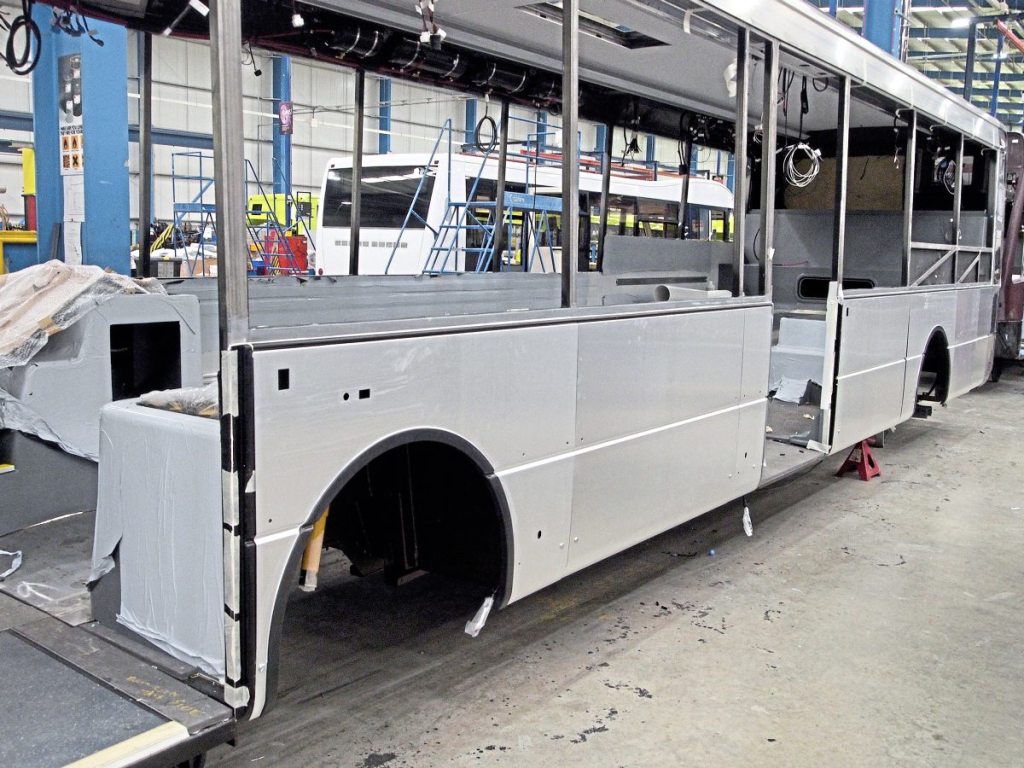
After the frame of the vehicle is constructed, bodywork, electrics and insulation are then installed
Electric future
Aside from developing abroad, Optare is also focusing on its electric bus offerings. Graham said there are already considerable numbers of its electric models in service in Europe.
Initially, Optare thought opportunity charging would prove popular with operators. This technique sees vehicles charged intermittently across their routes. However, overnight charging seems to be where the demand is, with vehicles given a single charge over a prolonged period when it is out of service (such as at night). Graham said: “Operators want a full day’s operation from one charge.”
Next year, Optare expects to have a bus that will deliver this, in the shape of the Metrodecker. Graham said: “We expect to be the first in the market with a full-capacity, zero emission electric double-deck in scheduled service.”
The Metrodecker is sold on being the lightest in its class and the electric version is intended to maintain this advantage.
The diesel version was launched in 2016. The EV version has been in service since summer of last year. The double-decker is also running on the streets of York and Leeds, with First trialling it. Robert said it also went to London just after Christmas, entering operation on Go-Ahead’s route 36.
One of the challenges when developing the electric version is the heating system, with it requiring a lot of energy from the battery to warm a double-decker. Robert said: “It’s all about the weight and the energy when designing this. If you take a single-decker, it typically has 60 people onboard if it’s a 10.8m two door version. But if you take the same platform and make it heavier, with 99 on the bus, there is a lot more energy requirement. It’s about squeezing in the right amount of energy.”
Of course, one of the other barriers of moving electric bus and coach technology further into operation on the streets is the cost of battery technology. However, Robert said: “Largely, yes, it’s the cost. But I draw the analogy of a mobile phone. I remember when they were like a brick, weighing a couple of kilos. Now, we have things like the iPhone X, which can do everything but drive your car. But it still costs about £15 a month, no more than the older ones did.”
How fast will battery technology develop? According to Robert: “In the next two to three years, electric buses will be doing 200 miles with full electric heating switched on. Our 2018 bus will do 150 miles.”
Looking further ahead, Robert said: “All the world’s commentators say 2025 will be the tipping point, where vehicles will go electric from diesel.”
He noted there has been massive investment in the technology from the likes of Tesla. “Nobody is investing in hybrids though.”
Although Optare is very pro-electric buses, that is not to say all operators are. Robert said: “I think operators want an electric bus to be the same as a diesel, so it’s the same to operate. At the moment, electric vehicles are expensive to buy, but cheaper to operate. I think ultimately, we have to prove the electric bus is beneficial versus a diesel; it is already at least on a par. But operators are looking at the shorter timeline, the initial outlay. From a reliability point of view, we wouldn’t have any concerns; we have been manufacturing these vehicles since 2009.”
In the preparation of ramped up sales of electric vehicles, Optare is getting heavily involved with the infrastructure they require. Graham said the company is well prepared in this area: “We know the decision makers involved in electrification.”
Optare is now waiting for the next round of OLEV (Office for Low Emission Vehicles) funding, being a keen supporter of such schemes. Robert said: “The bus needs to be at the forefront of how we look at transport.”
He criticised the way the media portrays the environmental credentials of buses and coaches: “Every time you see buses, they always pick a P reg’ school bus. The truth is, they are cleaner than most cars.”
Both Graham and Robert agree the days of the bus with the fume belching exhaust have all but gone. Robert said: “For us, diesel technology will fall by the wayside. Will it be five years’ time? Will it be a decade? I don’t know. But the industry needs to look forward and keep pace.”
Despite this focus on electric power, Optare is to continue with the ongoing development of its diesel powertrain, with fuel economy the biggest driver in the design of this technology.
Clean air
With this emphasis at Optare of producing green vehicles, the team is disappointed that buses and coaches are of high priority on Clean Air Zone lists, being targeted to clean air up before cars are. Robert said: “Buses are cleaner than most cars at Euro VI, yet there is not the same legislation targeting private cars.”
Why do they think this is? Graham said: “Because motorists are voters. I think culturally buses are still seen as something for other people. Except in London, where you can get on the bus with the highest paid lawyer.”
Thinking of ways to get more people out of cars and onto PCVs, Robert said: “If you had bus priority lanes, people would be more likely to catch buses.”
Graham agreed: “Like what Leeds is trying to do, making it the right thing to do to use the Park & Ride in and out of the city. Making it more comfortable for them, adding things like wifi.”
Autonomous vehicles
In addition to keeping pace with clean vehicle technology to make buses a better option, Graham said: “We are very mindful to look at autonomous vehicles, thinking in the longer term. But we have to be careful; the technology is there to take the driver out, but where is the customer service? There are lots of challenges and issues. It begs the question, what is the bus and what does it provide? What about people with a disability? Who would help them get on?”
Robert added: “Everybody seems to have ignored the cost. I wonder where the agenda comes from for them. People draw parallels with planes that have autopilot, but it’s a different environment on the road.”
Whether it is electric or automated vehicles, to make sure Optare is ready for the future, Ashok Leyland, its Indian parent company, has cleared Optare’s debts. The owners consider the Yorkshire manufacturer to be a “centre of excellence” for developing and manufacturing electric buses and this financial backing is considered a significant endorsement. The businesses are aligning their development of vehicles, with the two companies expected to be fully aligned in the next two years. “This is going to be a massive benefit to us,” said Robert.
He continued: “Our growth, we expect, is going to be around the export market and developing the UK market, with particular focus on EVs.”
Optare’s factory
There are 340 people working at Optare, with around 200 on the shop floor. Around 70 work in the aftermarket side and the rest are based in the offices. Robert said: “All of our engineering is done here, which is supported by our guys in Ashok Leyland.”
The company has been at its Sherburn-in-Elmet site since 2011, relocating from its previous Leeds facility. The factory is currently building eight vehicles a week, half of which is for the export market.
